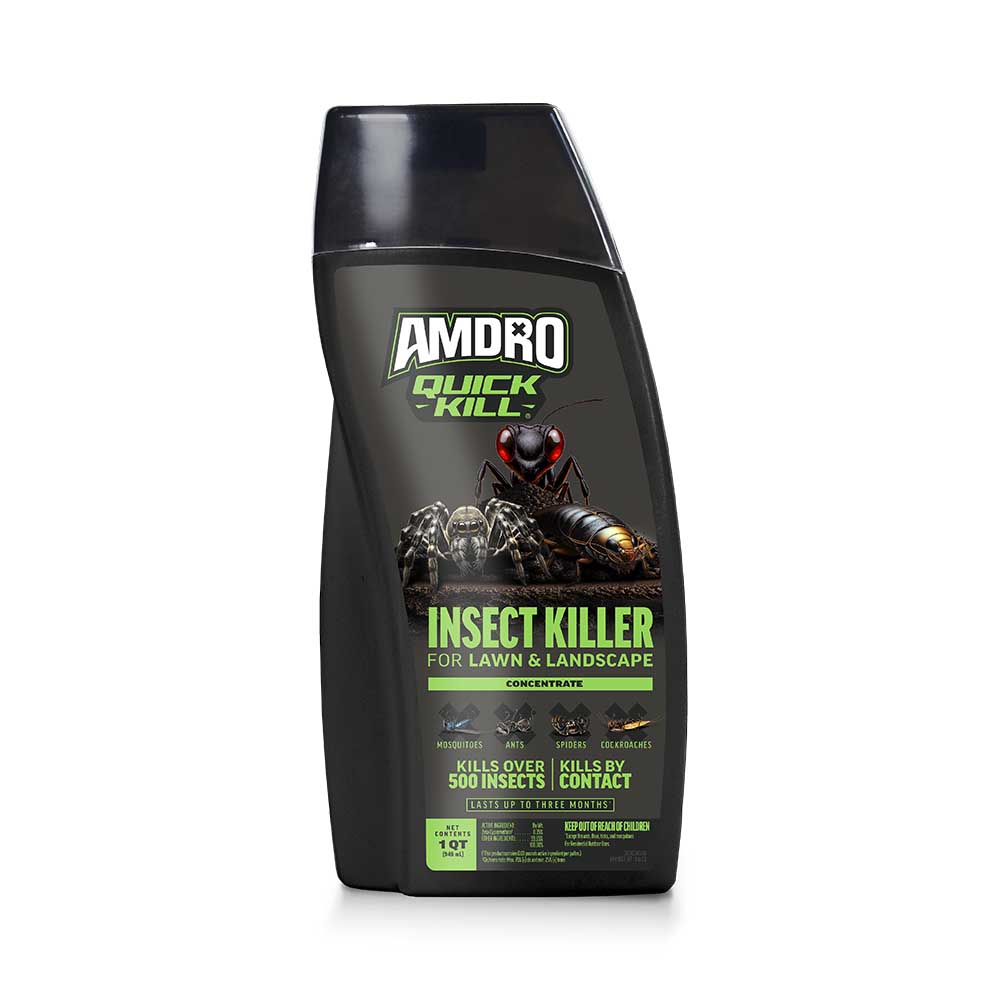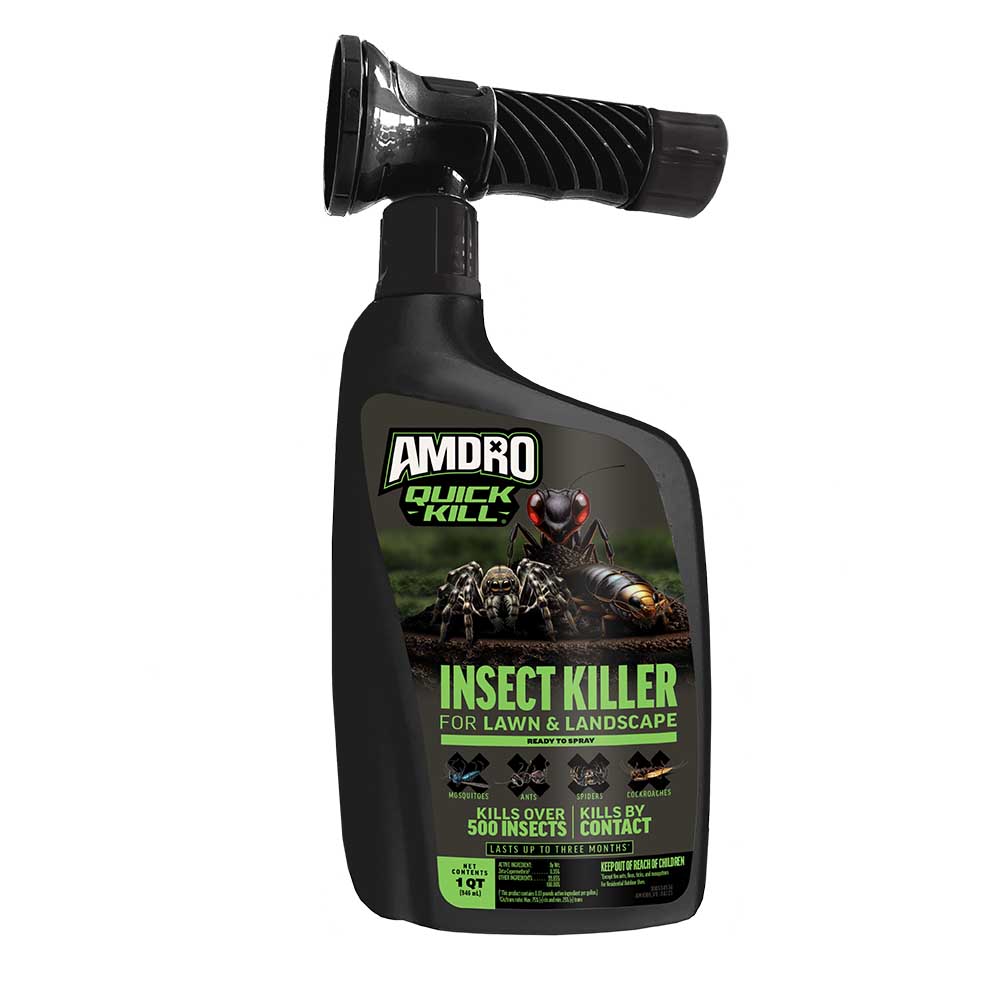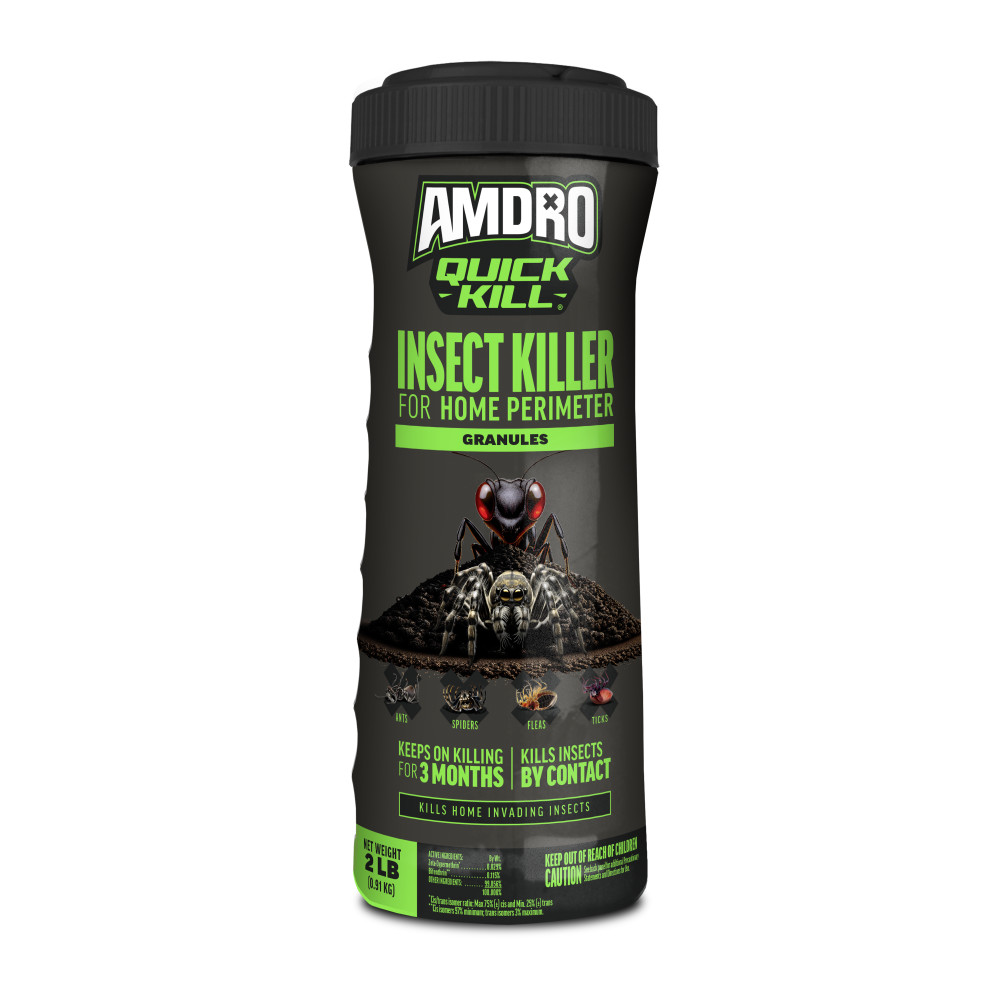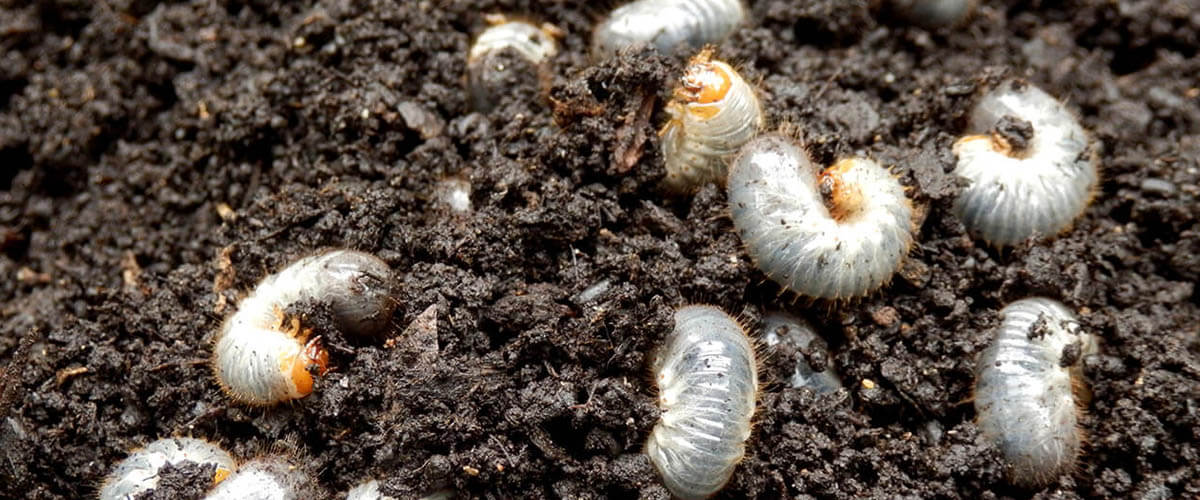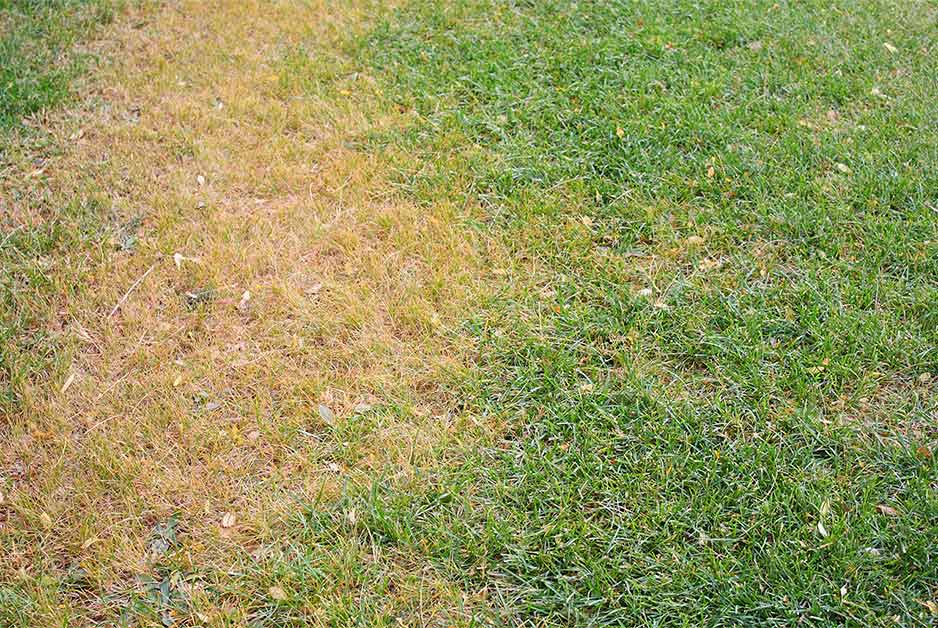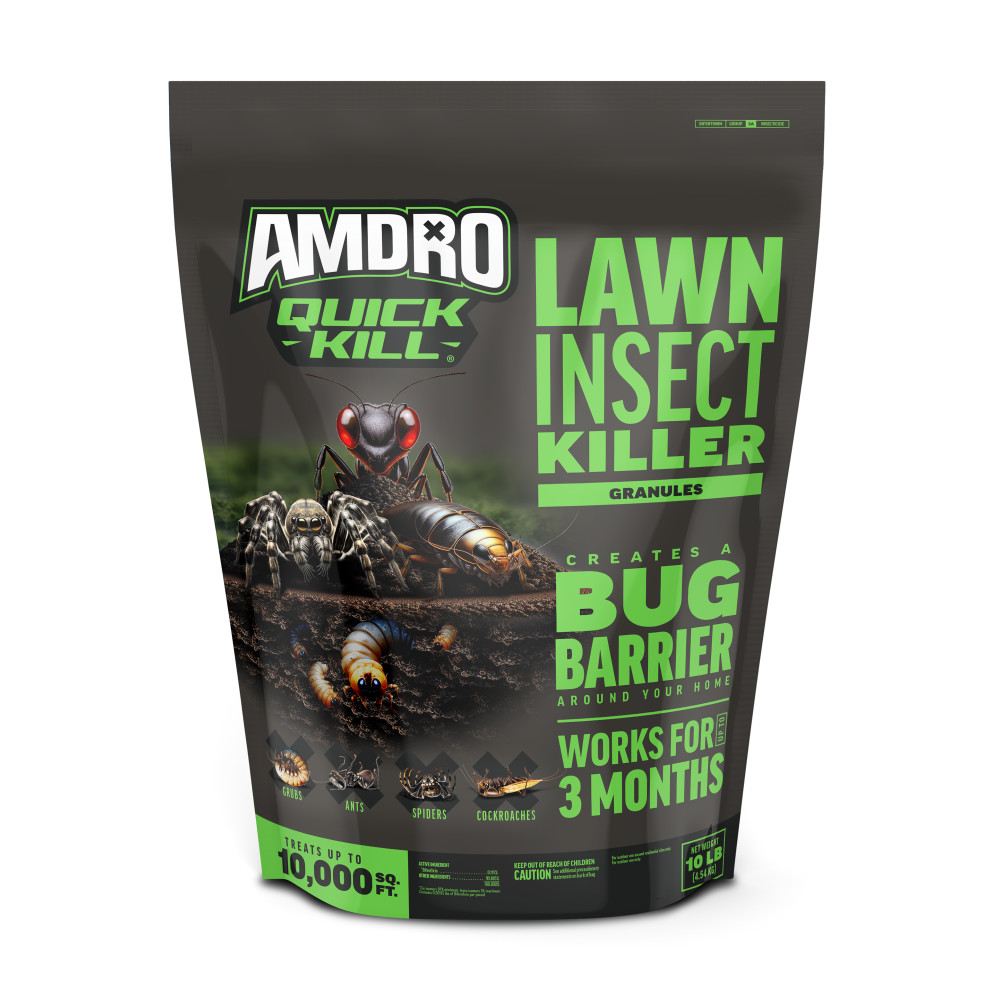
Amdro Quick Kill® Lawn Insect Killer Granules
Size:
Get back to enjoying your yard with this formula that keeps listed* lawn insects away for up to 3 months. Amdro Quick Kill Lawn Insect Killer Granules create a bug barrier around your home. The granules come ready to spread. All you need to do is spread them evenly across your yard and lightly water the treated area to kill and control up to 100 listed insects. After application, this product kills listed pests by contact and works for up to 3 months. The soil-penetrating formula targets lawn damaging insects like grubs and mole crickets that live below the surface. It also kills surface insects such as ants, spiders, cockroaches, fleas, ticks and more. Amdro Quick Kill Lawn Insect Killer Granules comes in two sizes. The 10-pound bag will cover up to 10,000 square feet, while the 20-pound bag provides up to 20,000 square feet of coverage. Since 1980, Amdro has been providing pest control products for ants, spiders, cockroaches, grubs, mosquitoes, carpenter bees and many more. With our tested formulas, you can feel confident your pest problem is handled and get back to your life. *Please refer to insect lists found in the Direction for Use.
- PROTECT YOUR YARD FROM LISTED PESTS with Amdro Quick Kill Lawn Insect Killer Granules. This product works for up to 3 months.
- READY TO SPREAD, EASY-TO-USE LAWN INSECT CONTROL. Spread uniformly over lawn and water-in after application to kill listed* insects, fleas,and ticks.
- SOIL-PENETRATING FORMULA kills lawn-damaging insects like grubs and mole crickets below the surface. Also kills surface insects like ants, spiders, fleas and ticks.
- CREATE A BUG-BARRIER around your home with easy-to-spread granules. The 10 LB bag will cover up to 10,000 square feet, the 20 LB bag will cover up to 20,000 square feet.
- KILLS BY CONTACT, WON’T HARM LAWNS, flower gardens, trees and shrubs. (When used as directed.)
- A TRUSTED PARTNER IN PEST CONTROL SINCE 1980. Count on Amdro for highly effective solutions to your pest control needs.
Ants, Spiders, Cockroaches, Grubs, Silverfish, Fleas, Ticks, and many other insects
View All Targeted Pests
FAQ
Does this product need to be watered in after application?
Yes, you will need to water your lawn immediately after applying Amdro Quick Kill Lawn Insect Killer Granules ™.
How long do I need to wait before letting my children and pets back in the treated area?
Children and pets may re-enter the treated area after the product has been watered in and thoroughly dried.
Is it safe to plant vegetables in an area where this product was applied?
Yes, it can be used on a variety of fruits and vegetables that are listed on the back of the bag.
Can I apply this product below the ground?
We do not recommend using it below the ground as it is only approved for use above the ground's surface.
Can this product be mixed with a weed and feed product? Can it be spread at the same time?
Never combine different chemicals unless instructed to on the product labels. Please wait 24 hours in between different product applications.

